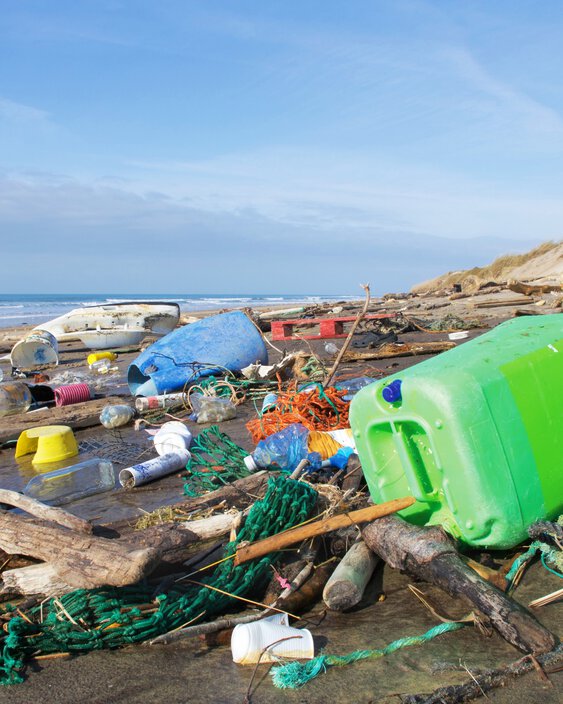
A variety of toxic effects
Microplastics
Microplastic contaminants in all environmental compartments may have significant effects on human health.
Loading ...
Microplastics are small pieces of plastic with a diameter of less than 5 mm. Microplastic particles originate from the fragmentation of large plastic litter or from direct environmental emission.
Microplastics in general can be classified into primary and secondary microplastics.
- Primary microplastics are plastics produced in micro size to be used as such (e.g. in cosmetics).
- Secondary microplastics are the predominant form and originate from fragmentation of plastic debris floating in the oceans through prolonged exposure to ultraviolet (UV) light and physical abrasion.
- A third category of microplastics is something in between primary and secondary microplastics, originating from the wear and tear of plastic products (e.g. dust from car and truck tires, synthetic textiles).
Most of the particles are not biodegradable and have lifespans of >100 years.
Microplastic pollution is probably one of the most widespread anthropogenic changes to the surface of our planet that affects nearly every environment on earth and has a very long-lasting effect on planetary health.
Scientific research has found evidence of detrimental effects of microplastic pollution on coastal and oceanic marine biota. Ingested by small marine organisms, microplastics accumulate while passing up the food chain. As a consequence of microplastic contamination, the amount and diversity of fish and seafood in the ocean might decrease.
The impact of microplastic contamination on land has received much less scientific attention than ocean pollution, but it may be even higher on land than in the ocean, since most of the microplastics are produced, used and disposed of on land before reaching the ocean and freshwaters. Microplastics might accumulate in terrestrial food chains at levels similar to or even higher than in their marine counterparts, although conclusive evidence is yet to be found.
Microplastics have been found in both indoor and outdoor air. However, the concentration in indoor air is likely to be higher than outdoors. Microplastics in indoor air result from the fragmentation of such plastic objects found in our homes as toys, furniture, plastic bags, cosmetics, toothpaste and scrubs. The majority of microplastics found in indoor air, however, comes from plastic fibres released from synthetic clothing and textiles used in home furnishings.
Due to the spread of microplastics in all environmental compartments (soil, water, air) and their occurrence in food and drinking water, it is probable that humans are exposed to microplastics in many ways.
The two major possible impacts on human health through microplastic are
- toxic effects due to chemical substances bound in plastic particles and
- effects of particles due to their small size (nanoplastics).
The main routes of human exposure to microplastic contamination are through drinking bottled water, food intake of fish and seafood, and breathing. Microplastics can also be consumed with other food items, or can be indirectly ingested through personal care products. Due to their small size, microplastics can be inhaled and may induce a wide range of diseases including respiratory and cardiovascular diseases, as well as cancer. Effects on human immune and nervous system are also discussed. The general long-term impact of microplastics on human health remains largely unknown since most studies as of today have been limited to the impact on marine life. How the damaging effects of microplastics on marine, freshwater, and land ecosystems affect human health still needs to be assessed. Based on studies of polymers for drug use, it can be concluded that particles of nanometre size are able to arrive in the blood circulation and from there reach organs like the liver, kidney, heart and brain. Further studies are needed to assess the resulting long-term effects on vital organs.
In recent years, substantially growing public interest in microplastics could be observed. In addition, there is an increasing awareness in national jurisdictions with respect to microplastics and several countries have already taken regulatory actions. Together with comprehensive legislation for the protection of both the environment and health, this may lead to future (re)insurance claims in many parts of the world. Widespread use, chemical stability and accumulation through the food chain and life span make microplastics prone to serial and cumulative losses.